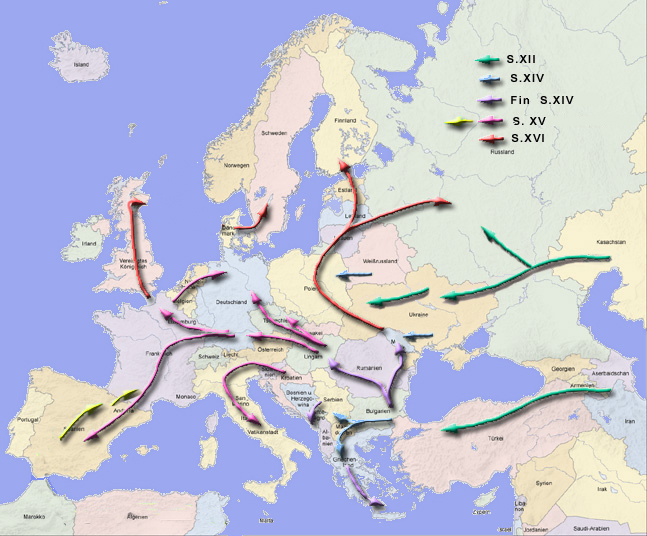New article, Tau haplotypes support the Asian ancestry of the Roma population settled in the Basque Country, by Alfonso-Sánchez et al., Nature (2017).
Abstract:
We examined tau haplotype frequencies in two different ethnical groups from the Basque Country (BC): Roma people and residents of European ancestry (general population). In addition, we analyzed the spatial distribution of tau haplotypes in Eurasian populations to explore the genetic affinities of the Romani groups living in Europe in a broader scope. The 17q21.31 genomic region was characterized through the genotyping of two diagnostic single nucleotide polymorphisms, SNPs (rs10514879 and rs199451), which allow the identification of H1 and H2 haplotypes. A significant heterozygous deficit was detected in the Romani for rs10514879. The H2 haplotype frequency proved to be more than twice in the BC general population (0.283) than in the Roma people (0.127). In contrast, H2 frequency proved to be very similar between Basque and Hungarian Romani, and similar to the H2 frequencies found in northwestern India and Pakistan as well. Several statistical analyses unveiled genetic structuring for the MAPT diversity, mirrored in a significant association between geography and genetic distances, with an upward trend of H2 haplotype frequencies from Asia to Europe. Yet, Roma samples did not fit into this general spatial patterning because of their discrepancy between geographical position and H2 frequency. Despite the long spatial coexistence in the Basque region between the residents of European ancestry and the Roma, the latter have preserved their Asian genetic ancestry. Bearing in mind the lack of geographical barriers between both ethnical groups, these findings support the notion that sociocultural mores might promote assortative matings in human populations.

I just realized I forgot to include the migration of Indo-Aryan Roma people in the map of medieval migrations… I shall correct that in future versions.

Featured image: Map of Romani dialects. From Wikipedia, by ArnoldPlaton.